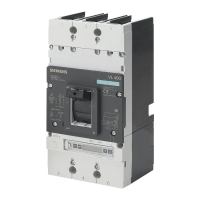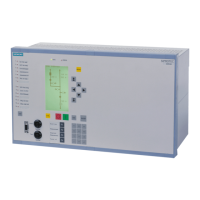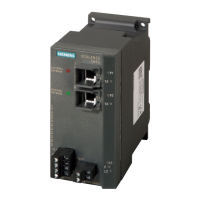Parameter assignment / addressing
9.1 Setting the parameters
3VL IEC molded case circuit breakers
122 System Manual, 11/2013, 110 0110 - 02 DS 03
2
A I
2
t waveform of the characteristic curve can be switched in (depending on the ETU), the
delay time t
sd
is based on the reference point 8 x I
R
. Two different procedures are used to
form the characteristic curve. As well as a fixed time delay for all currents in the
characteristic curve section, the I
2
t characteristic can also be used. The tripping time falls
continuously as the current increases, and the product of squared current and time remains
constant.
Figure 9-1 I
2
t
I instantaneous short-circuit protection I
i
On some trip units, the instantaneous short-circuit release I
i
can also be set. This refers to
the rated current I
n
of the molded case circuit breaker. It must always be noted that either the
instantaneous short-circuit release (I
i
) or the delayed short-circuit release (I
sd
) handles
personnel protection. The tripping current of the short-circuit release of the molded case
circuit breaker is set to a value that is at least 20% (tolerance of the trip unit) lower than the
lowest short-circuit current at the installation location and simultaneously higher than the
maximum operating current +20%. This guarantees that the circuit breaker will trip within the
required time even with the smallest short-circuit current, and that correct currents will not
result in unwanted trips.
G ground-fault protection I
g
The tripping value of the of the ground-fault release I
g
is fixed to the rated breaker current on
the ETU12 and ETU22. The tripping current of the ground-fault release can be set to
between 0.6 and 1 x I
n
, and the delay time t
g
can be set between 0.3 s and 0.6 s. The
measuring methods for the ground-fault protection are specified on the representation of the
trip unit. On the ETU42, the tripping current of the ground-fault release can be set to
between 0.4 and 1 x I
n
, and the delay time can be set between 0.1 s and 0.5 s.
Note
Ground-fault protection
It must be noted that the ground
-fault protection is not a residual-current operated circuit
er (FI or RCD in the building installation). Fault currents to ground therefore cannot be
detected, only ground "short"
-circuits.

